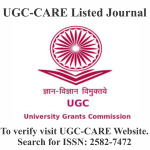A STUDY ON WORK-LIFE BALANCE TO WORK-LIFE INTEGRATION IN PROFESSIONAL EDUCATION SECTOR IN UTTAR PRADESH
DOI:
https://doi.org/10.29121/shodhkosh.v5.i1.2024.6515Keywords:
Private Higher Educational Institutions, Small Colleges, Academic Staff, Turnover, Employee Retention, Indian Qualification Agency, Employee SatisfactionAbstract [English]
The purpose of this instrumental case study was to explore the perception of constant access to technology for faculty members in the university setting. Constant access to technology was defined as the majority of work tasks taking place in front of the computer, the expectation of quick email responses, and the pressure for continual student interaction, particularly outside of regular business hours. Burnout theory guided this study, which provided views of faculty’s efficiency, stress levels, and personal time.
Faculty attrition & retention can be seen to have many meanings and can be explained academically in a variety of ways. However, in simple terms it would mean finding talented people, having them perform well and keeping them in the organization. One needs to look at different ways and means by which Academic Institutions in India, are trying to keep their talent management process in place not only in acquiring talent, but also to retain the talented people from moving out of their educational institute.
This doctoral research work seeks to empirically examine the process, in which the faculty members are hired, nurtured/trained and retained in Academic Institutions and the factors affecting faculty shortage in Academic Institutions. This study is done with the objectives of identifying the factors affecting the faculty supply in Academic Institutions and to understand the key drivers of post graduate (Management) students towards taking Teaching profession.
The methodology adopted in this study was both qualitative and quantitative research. The data was collected from the combination of structured questionnaires and from personal interviews with selected stakeholders of Academic Institutions (Deans, Faculty ). The personal enquiry notes were the rewarding phase of the research. This has been documented with meticulous care. Data has been processed and analysed using SPSS / Excel.
The population studied was the Management Institutes in Lucknow & periphery. This study was confined to State of Uttar Pradesh due to time and cost limitations. These institutes showed homogeneity in terms of recruitment, selection and retention of faculty in general and were headed by Deans/HODs meeting academic criteria, as laid down by AICTE.
In this research probability sampling was used to draw conclusions from a sample and to generalize the results back to the population and convenience sampling was used in case of Heads.
References
Amram, S. (2004). Organizational Work Life Balance Practices: Socialization, Perceived Fit and Organizational Outcomes. Concordia University, Montreal, Quebec, Canada.
Babakus, E., Yavas, U. & Ashill, N.J. (2009). “The Role of Customer Orientation as A Moderator of The Job Demand-Burnout-Performance Relationship: A Surface-Level Trait Perspective”. Journal Of Retailing, 85(4):480-492. DOI: https://doi.org/10.1016/j.jretai.2009.07.001
Baltes, B., Briggs, T., Huff, J., & Wright, J. (1999). Flexible and Compressed Workweek Schedules: A Meta-Analysis of Their Effects on Work-Related Criteria. Journal of Applied Psychology, 84:496–513. DOI: https://doi.org/10.1037//0021-9010.84.4.496
Budhwar, P., & Mellahi, K. (2007). Introduction: Human Resource Management in The Middle East. The International Journal of Human Resource Management, 18(1):2-10. DOI: https://doi.org/10.1080/09585190601068227
Chaminade B (2007). A retention checklist: how do you rate? Retrieved from http://www.humanresourcesmagazine.co.au. Accessed, 28 November, 2007
Chiboiwa, M., Samuel, M., & Chipunza, C. (2010). An Examination of Employee Retention Strategy in A Private Organisation in Zimbabwe. African Journal of Business Management, 4(10):2103-2109.
Collings, D. G., & Mellahi, K. (2009). Strategic talent management: A review and research agenda. Human resource management review, 19(4), 304- 313. DOI: https://doi.org/10.1016/j.hrmr.2009.04.001
Deery, M. (2008),"Talent Management, Work-Life Balance and Retention Strategies", DOI: https://doi.org/10.1108/09596110810897619
Eaton S. (2003). If You Can Use Them: Flexibility Policies, Organizational Commitment and Perceived Performance. Industrial Relations, 42:145-67. DOI: https://doi.org/10.1111/1468-232X.00285
Edgar, E., & Pair, A. (2005). Special education teacher attrition: It all depends on where you are standing. Teacher Education and Special Education, 28(3-4), 163-170. DOI: https://doi.org/10.1177/088840640502800403
Ingersoll, R. M. (2003). The teacher shortage: Myth or reality?. Educational Horizons, 81(3), 146-152.
International Journal of Contemporary Hospitality Management, 20(7):792-806.
Lewis, R. E., & Heckman, R. J. (2006). Talent management: A critical review. Human resource management review, 16(2), 139-154. DOI: https://doi.org/10.1016/j.hrmr.2006.03.001
Liu, X. S., & Meyer, J. P. (2005). Teachers' perceptions of their jobs: A multilevel analysis of the teacher follow-up survey for 1994-95. Teachers college record, 107(5), 985-1003. DOI: https://doi.org/10.1177/016146810510700504
Michaels, E., Handfield-Jones, H., & Axelrod, B. (2001). The war for talent Boston: Harvard Business School Press. Cited in, 594.
Downloads
Published
How to Cite
Issue
Section
License
Copyright (c) 2024 Srishti Singh, Dr. Asha Srivastava

This work is licensed under a Creative Commons Attribution 4.0 International License.
With the licence CC-BY, authors retain the copyright, allowing anyone to download, reuse, re-print, modify, distribute, and/or copy their contribution. The work must be properly attributed to its author.
It is not necessary to ask for further permission from the author or journal board.
This journal provides immediate open access to its content on the principle that making research freely available to the public supports a greater global exchange of knowledge.




















